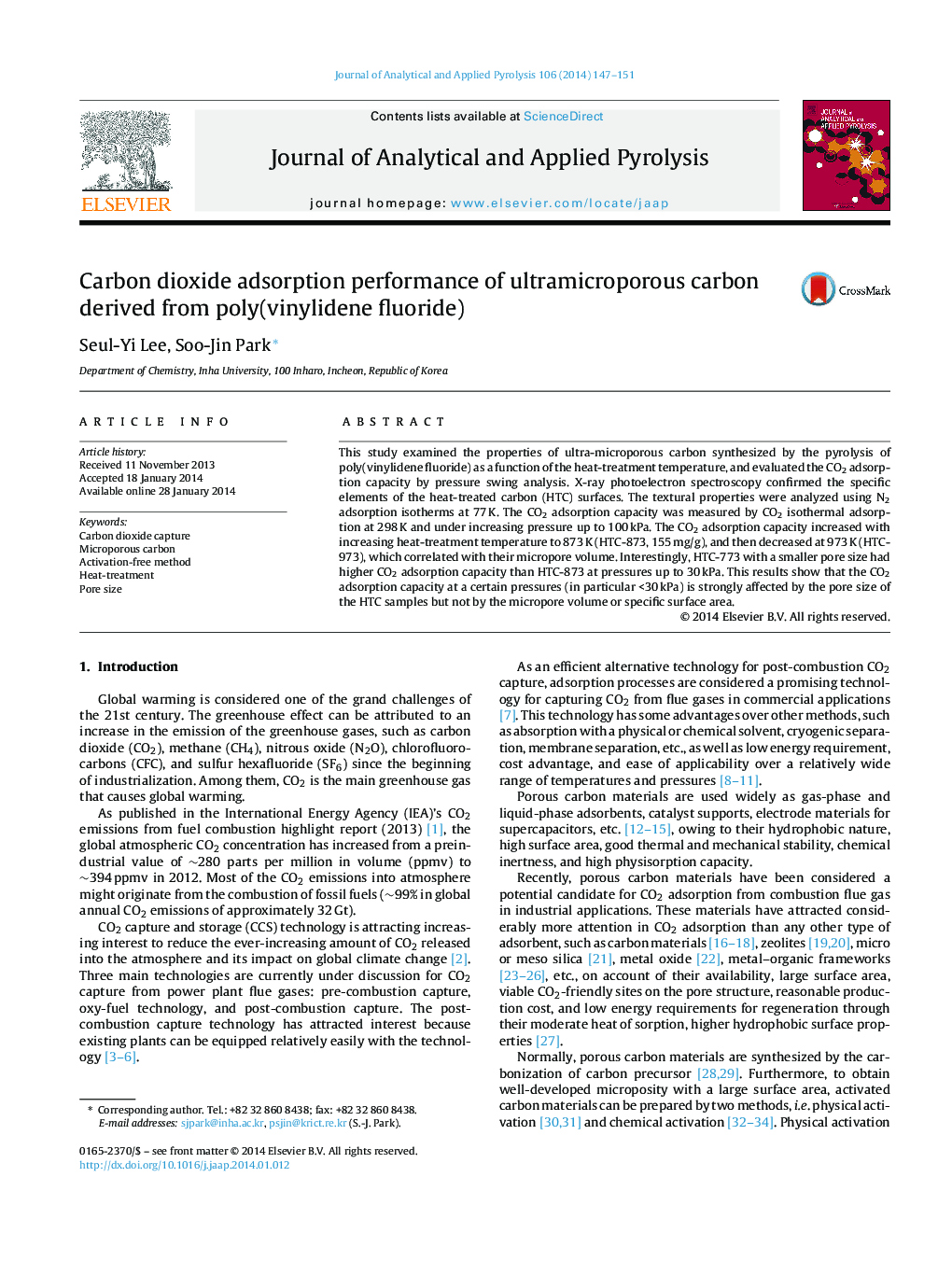| Article ID | Journal | Published Year | Pages | File Type |
|---|---|---|---|---|
| 1196869 | Journal of Analytical and Applied Pyrolysis | 2014 | 5 Pages |
•Ultra-microporous carbon was synthesized by the pyrolysis of PVDF.•This enabled forming of many micropores without further activation process.•The highest CO2 adsorption capacity: 155 mg/g @ RT, 100 kPa (HTC-873).•The highest CO2 adsorption capacity: 87 mg/g @ RT, 30 kPa (HTC-773).•They were strongly affected by their micropore size depending on pressure.
This study examined the properties of ultra-microporous carbon synthesized by the pyrolysis of poly(vinylidene fluoride) as a function of the heat-treatment temperature, and evaluated the CO2 adsorption capacity by pressure swing analysis. X-ray photoelectron spectroscopy confirmed the specific elements of the heat-treated carbon (HTC) surfaces. The textural properties were analyzed using N2 adsorption isotherms at 77 K. The CO2 adsorption capacity was measured by CO2 isothermal adsorption at 298 K and under increasing pressure up to 100 kPa. The CO2 adsorption capacity increased with increasing heat-treatment temperature to 873 K (HTC-873, 155 mg/g), and then decreased at 973 K (HTC-973), which correlated with their micropore volume. Interestingly, HTC-773 with a smaller pore size had higher CO2 adsorption capacity than HTC-873 at pressures up to 30 kPa. This results show that the CO2 adsorption capacity at a certain pressures (in particular <30 kPa) is strongly affected by the pore size of the HTC samples but not by the micropore volume or specific surface area.
